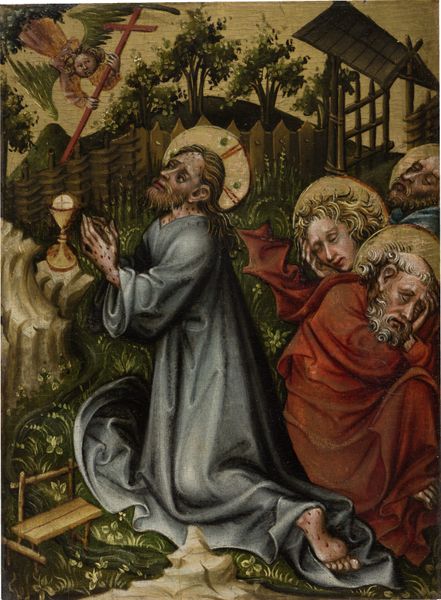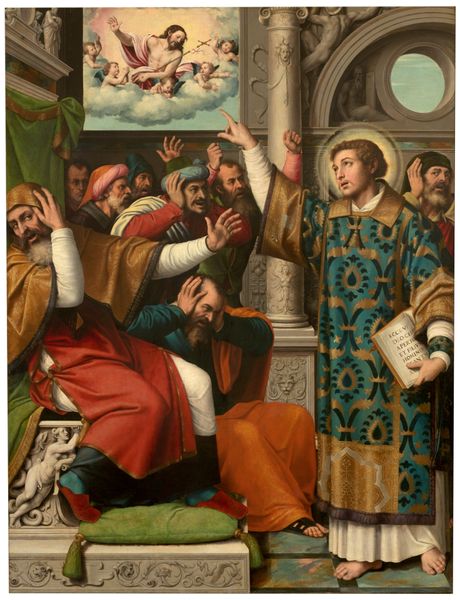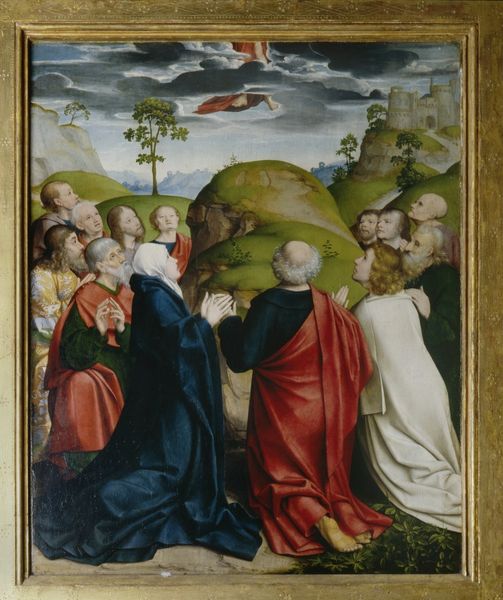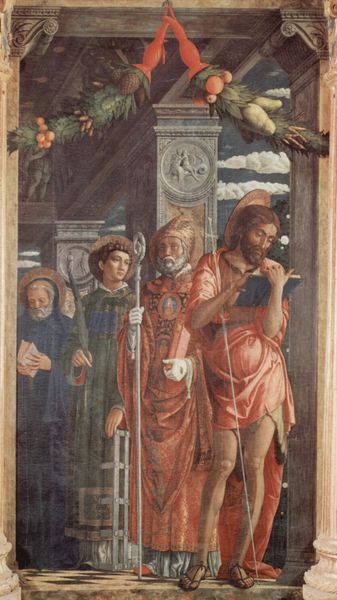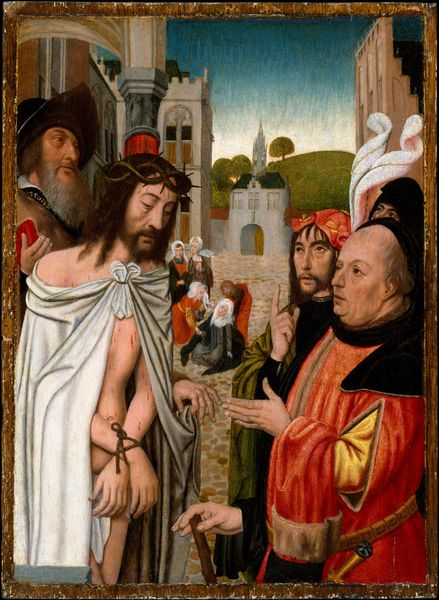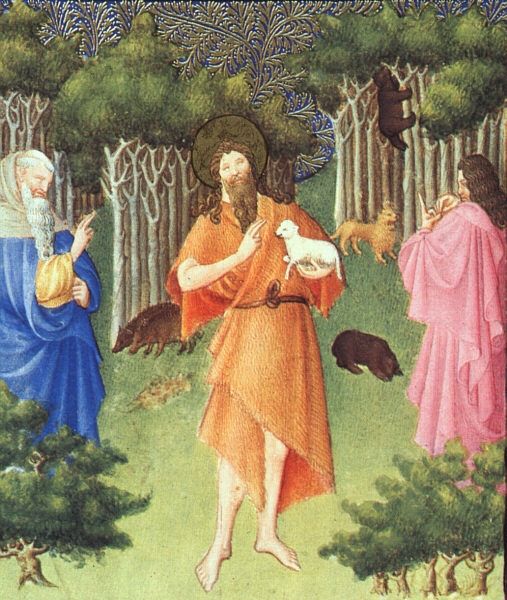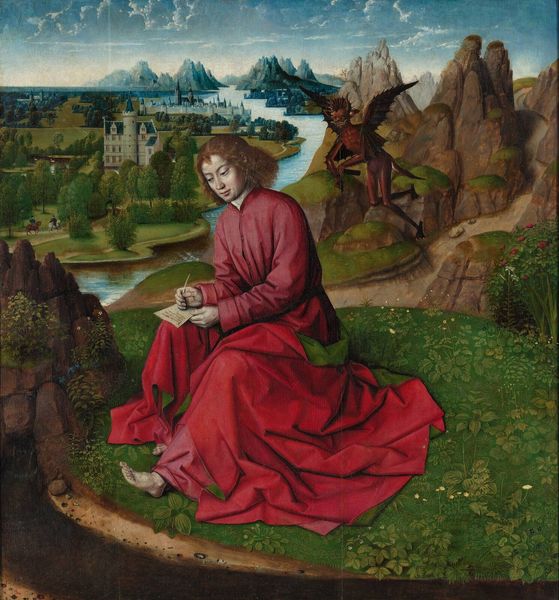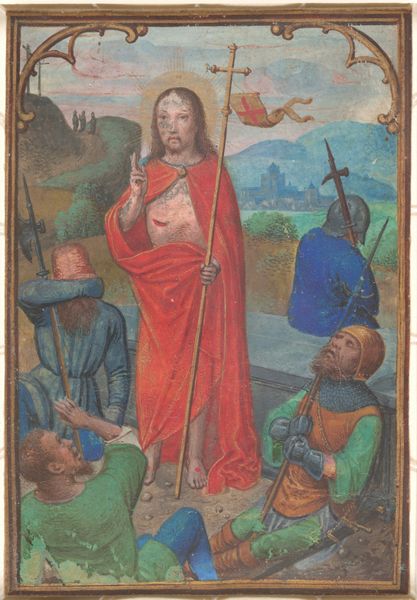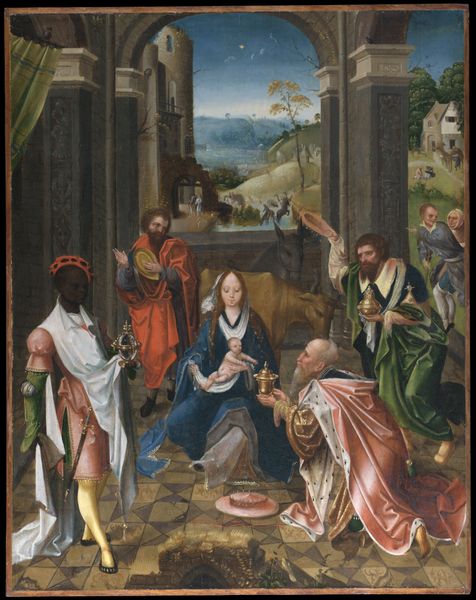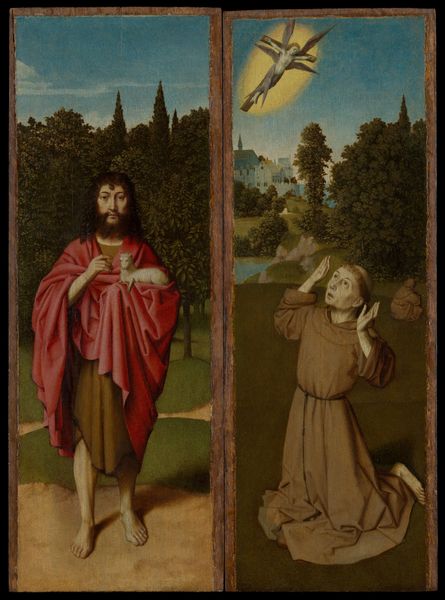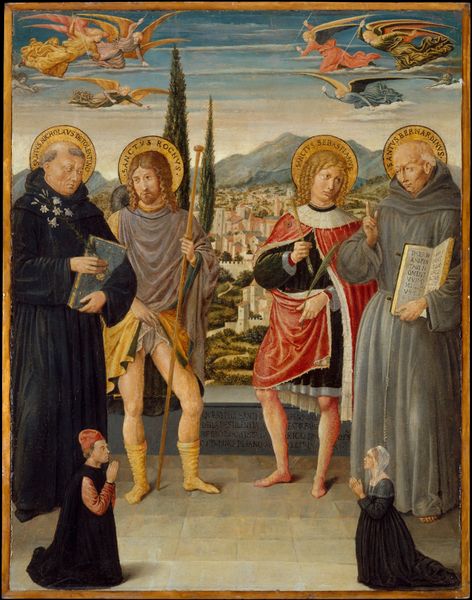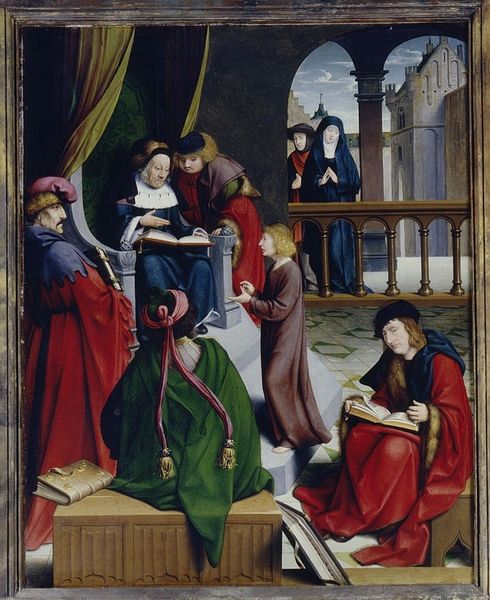
painting, oil-paint
#
medieval
#
narrative-art
#
painting
#
oil-paint
#
figuration
#
oil painting
#
mythology
#
history-painting
#
northern-renaissance
Copyright: Public domain
Jan Joest made this painting of Moses, likely in the late 15th or early 16th century. We see Moses with his staff turning into a serpent. The faces of the figures are expressive, particularly the man falling to the lower right, recoiling in terror at the transformation. Joest was working in a cultural moment that expected art to teach moral lessons. This work would remind viewers of the power of God and the importance of obedience. At the time, the church was a powerful institution, and artists often worked to support its mission. But art could also subtly critique social norms. We should consider who commissioned the painting and where it was displayed. A church? A private home? The setting would have shaped how people understood its message. Art history isn't just about aesthetics. To truly understand a work, we delve into the world in which it was created. This is done by consulting historical documents, religious texts, and studies of patronage. This helps us understand the dialogues between artists, institutions, and society.
Comments
No comments
Be the first to comment and join the conversation on the ultimate creative platform.

